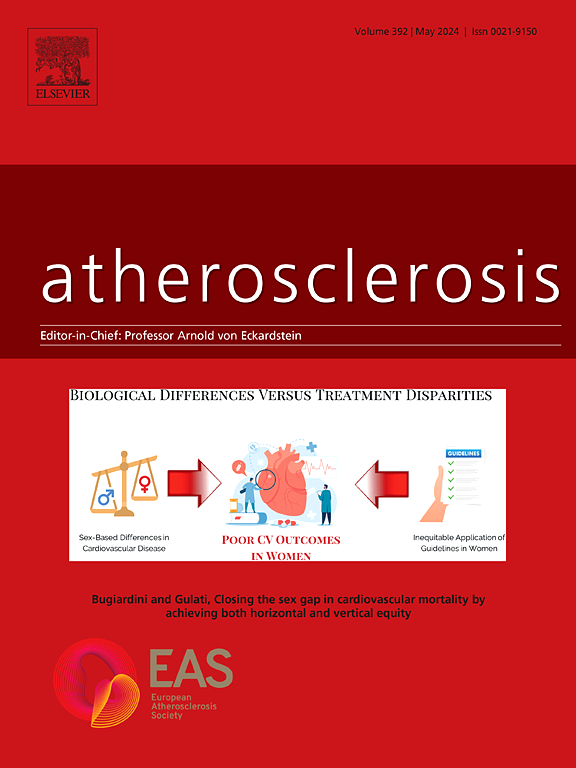Efficacy and safety of ongericimab in Chinese patients with heterozygous familial hypercholesterolemia: A randomized, double-blind, placebo-controlled phase 3 trial
IF 4.9
2区 医学
Q1 CARDIAC & CARDIOVASCULAR SYSTEMS
引用次数: 0
Abstract
Background and aims
Heterozygous familial hypercholesterolemia (HeFH) is a prevalent autosomal dominant disorder of lipid metabolism but severely underdiagnosed and undertreated in China. This phase 3 trial aims to evaluate the efficacy and safety of ongericimab, a novel monoclonal antibody that targets proprotein convertase subtilisin/kexin type 9 (PCSK9), in Chinese patients with HeFH.
Methods
Patients who have been diagnosed with definite HeFH according to Dutch Lipid Clinical Network criteria and receiving stable and optimized lipid-lowering therapy were enrolled. A total of 135 patients were randomly assigned in a 2:1:2:1 ratio to receive either ongericimab 150 mg or matching placebo every 2 weeks (Q2W), or ongericimab 450 mg or matching placebo every 4 weeks (Q4W) for 24 weeks. Patients were stratified according to the use of high-intensity statins. The primary endpoint was the percentage change in LDL-C from baseline to week 24.
Results
Our findings demonstrated that treatment with ongericimab resulted in a significant reduction in LDL-C at week 24. The least-squares mean difference was −69.4 % (95 % confidence interval [CI]: −80.9 %, −57.9 %; p < 0.0001) for the ongericimab 150 mg Q2W group, and −80.6 % (95 % CI: −92.1 %, −69.1 %; p < 0.0001) for ongericimab 450 mg Q4W group compared to respective matching placebo groups. Meanwhile, ongericimab also favorably altered other lipid parameters. A similar incidence of adverse events was observed in the ongericimab and placebo groups.
Conclusions
Ongericimab administered at either 150 mg Q2W or 450 mg Q4W for 24 weeks, significantly reduced LDL-C levels and was well-tolerated in Chinese patients with HeFH.
Clinical trial registration
http://www.clinicaltrials.gov; Unique Identifier: NCT05325203.

求助全文
约1分钟内获得全文
求助全文
来源期刊

Atherosclerosis
医学-外周血管病
CiteScore
9.80
自引率
3.80%
发文量
1269
审稿时长
36 days
期刊介绍:
Atherosclerosis has an open access mirror journal Atherosclerosis: X, sharing the same aims and scope, editorial team, submission system and rigorous peer review.
Atherosclerosis brings together, from all sources, papers concerned with investigation on atherosclerosis, its risk factors and clinical manifestations. Atherosclerosis covers basic and translational, clinical and population research approaches to arterial and vascular biology and disease, as well as their risk factors including: disturbances of lipid and lipoprotein metabolism, diabetes and hypertension, thrombosis, and inflammation. The Editors are interested in original or review papers dealing with the pathogenesis, environmental, genetic and epigenetic basis, diagnosis or treatment of atherosclerosis and related diseases as well as their risk factors.
 求助内容:
求助内容: 应助结果提醒方式:
应助结果提醒方式:


